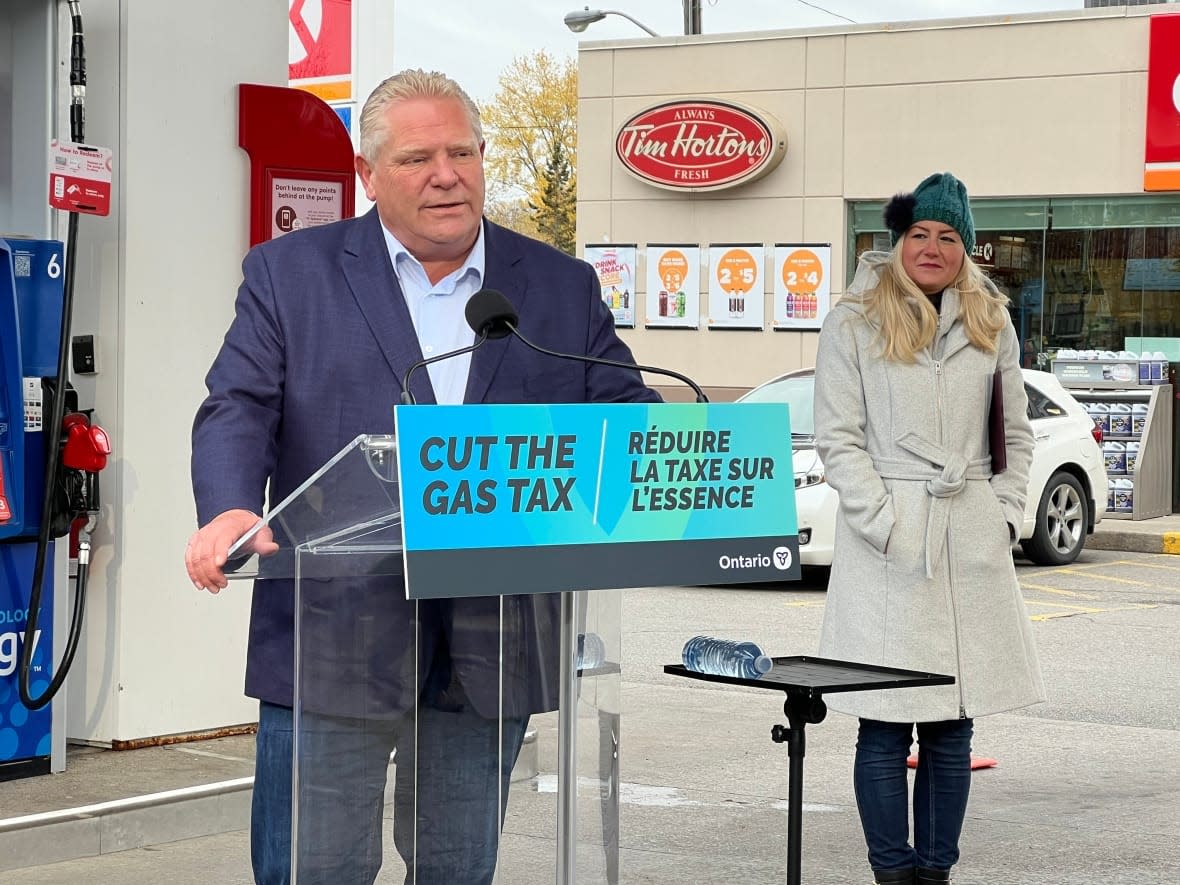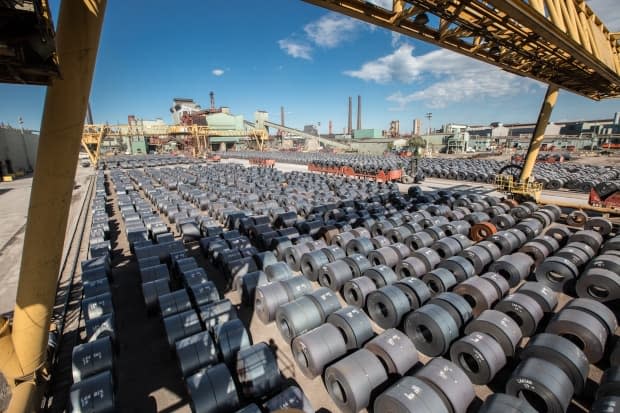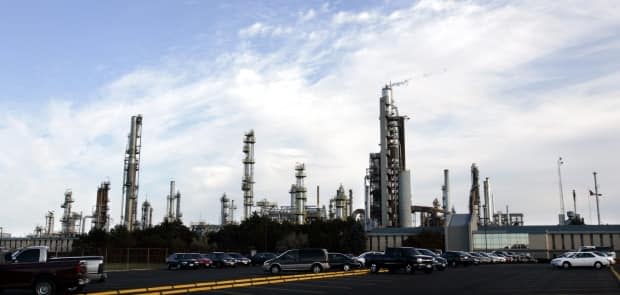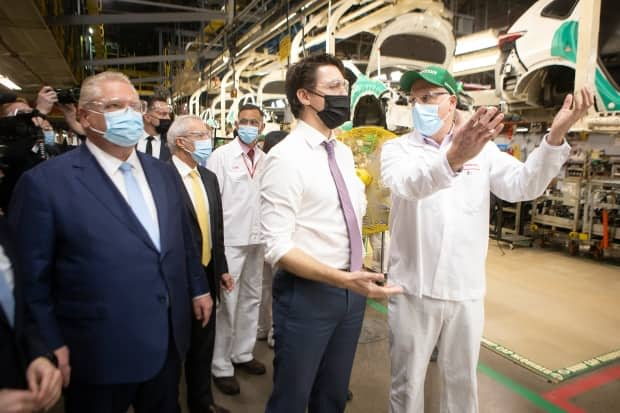Ontario now has a carbon tax on industry. What will Doug Ford's government do with the revenue?

Premier Doug Ford's government expects to bring in more than $2 billion through a carbon tax on industrial emitters over the next eight years, CBC News has learned.
The Ontario government hasn't said yet what it will do with the revenue. That's got everyone from corporate lobbyists to environmental groups calling on the province to clarify its plans for this new source of income.
Ontario is poised to start collecting what it calls "compliance payments" from the biggest industrial producers of greenhouse gas emissions, including auto manufacturers, steel mills, cement makers, chemical plants and oil refineries.
This marks the transition from the federal program for industrial carbon pricing that's been in place since 2019, imposed by Ottawa when the Ford government scrapped Ontario's cap-and-trade system.
Have a question or something to say? Email: ask@cbc.ca or join us live in the comments now.
Previously unpublished figures that the provincial government provided to CBC News show Ontario forecasts it will collect $131 million in compliance payments from industry in 2023, with the annual total estimated to hit $446 million in 2030.
The question now: how will the Ford government spend that money?

"We are developing an approach for the use of proceeds collected under the program," said Gary Wheeler, a spokesperson for Ontario's Ministry of the Environment, Conservation and Parks, in an email to CBC News.
There's no shortage of advice for the government on what that approach should be.
Dennis Darby, president and CEO of Canadian Manufacturers and Exporters, says the government should put the money back into the industries that pay the fees in ways that help them reduce their greenhouse gas (GHG) emissions.
"I think Ontario's got a great opportunity," said Darby in an interview. "If they do it right, this can be net beneficial to industry, but also of course net beneficial to the environment."
For industries to decarbonize, Darby says governments need not only to show them the stick of carbon pricing but also the carrot of funding for technologies that reduce emissions.
"I think we have an opportunity right now to do this in a way that will ultimately lead to the outcome we want, which is helping companies improve their GHG performance," he said.
Ontario's forecast revenue from industrial carbon pricing
Ford and his government have been opposed to all forms of carbon pricing since taking office in 2018. But the Supreme Court of Canada upheld the federal carbon pricing law, so the provinces face a choice: either put a price on emissions (and collect the revenue) or Ottawa imposes a carbon price anyway (and the feds get to collect the revenue).
The latter is what happens with the carbon tax that's drawn the most public attention: on fuel at the pumps. The Trudeau government has collected that revenue in Ontario, Alberta, Saskatchewan and Manitoba, handing it back to taxpayers in those provinces through income tax rebates.
While that isn't changing in Ontario, the province is taking over collecting fees for CO2 emissions from large industrial producers, at prices set by Ottawa: $65 per tonne for this year, climbing by $15 each year, to reach $170 per tonne in 2030.
For more than a year, the Ontario Chamber of Commerce has been urging the Ford government to make clear its plans for the funds .
Claudia Dessanti, the chamber's senior manager of policy, authored a report back in 2021 calling on the province to consult with affected industries on how to spend the money.
"Businesses are eager to reduce their emissions," Dessanti said in an interview. "For many of them, the lack of certainty about costs and return on investment is a big barrier. So the more the government can do to provide transparency, the better."

Dessanti says the best use of the revenue would be to invest in low-carbon technologies for energy-intensive industries that have the most difficulty in reducing emissions.
"There are technologies out there, but often industry doesn't have the capital to do it, or it's unclear to them whether the return on investment is there," she said.
The industrial carbon pricing revenue that the federal government collected in Ontario since 2019 is earmarked for clean technology projects to help industries in the province reduce emissions.
Federal figures show that Ottawa collected $85.3 million from Ontario industries in 2019 and $117.2 million in 2020 through its program, called the Output Based Pricing System.
Ontario's equivalent is dubbed the Emissions Performance Standards program. In consultation documents published over the latter half of 2022, the province said its program would save industry more than $1 billion by 2030 compared with the federal system, but did not publish a breakdown of its projections.

Environmental groups are watching closely what Ontario does with the revenue.
Jason Wang, senior analyst at the Pembina Institute, said the government should look at investing in new or emerging technologies, such as low-emission production of cement.
"Revenue from carbon pricing should be spent on clean economy initiatives," said Wang in an interview.
"The energy transition worldwide is going to require billions of dollars of private investment, so anything the government can do to encourage that investment in the right place is a good thing."
Lana Goldberg, Ontario climate program manager at Environmental Defence, said she supports the province providing clean-technology funding to help companies electrify their operations, but opposes any funding for fossil-fuel companies.
"The best use of the funds would be to invest in renewable energy projects like wind and solar to ensure that Ontario is replacing the many gas plants that are currently being used to generate electricity."


